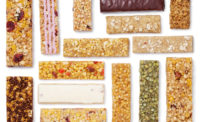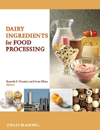It’s a constant buzz in consumers’ ears: what they should eat, what they shouldn’t. From butter to eggs to bread, it’s hard to tell what is true. In fact, according to the International Food Information Council’s annual “Food and Health Survey,” over 80 percent of consumers say they receive conflicting information about what foods they should avoid. It doesn’t help that news sources will often take a study that correlates a food with a health outcome, like red meat and heart disease, and say that the food causes the health issue. This creates an alarm around one specific item while completely discounting other factors. Additionally, a recent study from the University of Glasgow found that up to 90 percent of nutrition and weight loss information shared by top influencers is opinion-based, not based in science. Many people rely on influencers as credible sources of information, so this is troubling to see.
What does this mean for the snack industry, which is often demonized for marketing processed foods? First of all, as more people are eating snack foods between meals and as meal replacements, the snack industry shows no sign of slowing down. As snacking continues to grow, consumers are seeking out more “better-for-you” options, according to Mondelez International’s “State of Snacking” report. Additionally, the report highlighted that people are more focused on snacking to meet nutritional needs and provide more personalized nutrition. Snacks are no longer synonymous with junk food.
Grain-based snacks seem to be catching a break, too. According to a Grand View Research “Healthy Snacks Market” report, consumers are purchasing more cereal and granola bars since they offer convenience and health benefits like instant energy and nutrition. In 2018, they controlled 35 percent of market revenue for snacks in North America.
Even amidst the fog of conflicting information available, consumers are starting to realize that cutting out carbs is not the key to weight loss or a healthy diet. In fact, for the third year in a row, “U.S. News & World Report” ranked keto as one of the worst possible diets to follow. The report used information from medical journals, government data, and input from health and nutrition experts to build its ranking. The facts are clear: Carbohydrates are not associated with retaining fat. It’s important to let consumers know that eating grain foods and carbohydrates fuel the body and allow protein to be used for other important functions instead of being used for energy. Moreover, one Grain Foods Foundation study found that whole grain and cereal fiber intake are associated with lower total percent body fat and “belly fat.”
At the same time, grain foods contribute a whopping amount of under-consumed shortfall nutrients and nutrients of public health concern, such as dietary fiber, folate, magnesium, calcium, iron, vitamin A, vitamin E, vitamin B12, niacin, and thiamin—all while contributing less than 15 percent of caloric intake in consumers’ total diets. Another study, “Grain foods are contributors of nutrient density for American adults and help close nutrient recommendation gaps,” found that people who reach their daily intake of grain foods weigh 7 pounds less on average than their counterparts.
Consumers know what they want: convenient, better-for-you snacks. Grains, both enriched and whole, are critical sources of shortfall nutrients. Many consumers eliminate grains from their diet because an influencer told them it would be a “cure all” or they read some click-bait on the internet. In reality, cutting grains without the facts can have unintended health consequences. This year, let’s cut the fads instead of cutting grains. Grains are the snacks that love us back









